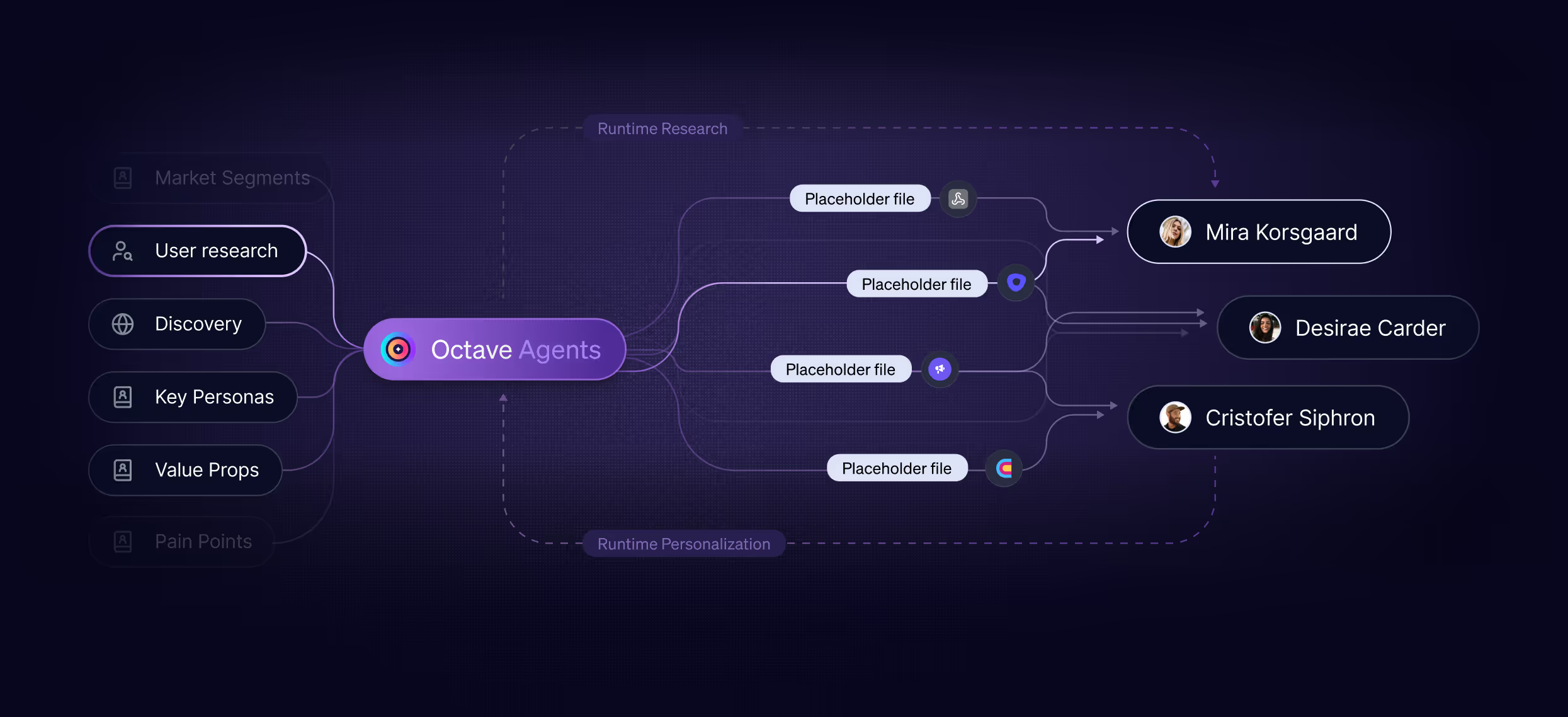AI Definitions: Making Sense of AI Terminology

Making Sense of AI Terminology: A Practical Framework
The AI space has an evolving, shared vocabulary that means different things to different people. "AI-powered," "AI-native," "agentic," "autonomous" appear in most product descriptions and analyst reports today. Founders use them to position their products, analysts use them to categorize markets, and marketers use them to capture attention.
But many people simply nod along and pretend to know what they mean (no shame).
This creates a practical problem: it becomes difficult to evaluate tools or understand what you're actually considering when everyone uses the same terms with different meanings.
We thought it would be helpful to share how we think about these concepts within Octave. By no means are these authoritative definitions, but hopefully we can give you a framework to help you the next time you see these terms.
AI-Powered vs. AI-Native
These terms are often used interchangeably, but in our minds are fundamentally distinct. The key distinction here is how deeply AI is integrated into a tool's fundamental design.
AI-powered tools add intelligence to existing workflows. These are traditional software platforms enhanced with AI capabilities. You might see auto-summaries, rewrite suggestions, or smart filters integrated into your CRM. These features provide clear value, but are simple enhancements of your existing workflows.
AI-native platforms approach the problem differently. Instead of adding AI as a layer, they build understanding into their foundation. The system is designed with an understanding of how different components relate to one another and how workflows connect into a cohesive system.
This architectural difference creates a practical advantage. When your approach evolves, AI-native systems can adapt more naturally because they understand the relationships between components rather than treating each task in isolation.
Human-in-the-Loop vs. Agentic
This dimension focuses on decision-making authority and accountability.
Human-in-the-loop tools enhance human judgment without replacing it. They generate options, surface insights, and prepare recommendations, but humans retain final authority. This approach makes sense for nuanced work: crafting messaging, defining segments, or positioning against competitors. These tasks require context, intuition, and strategic thinking that humans excel at.
Agentic tools execute decisions within defined boundaries. When tasks are well-scoped and repeatable, the system can act independently. This autonomy becomes valuable for work that's time-intensive and/or less valuable.
The most effective platforms combine both approaches strategically.
At Octave, humans own strategy and positioning while agents handle execution within strict parameters. The goal isn't full automation, but reducing the operational overhead and allowing for more deep, strategic work.
The Four Combinations in Practice
AI-powered + Human-in-the-loop: A rewrite button in your email tool. Helpful for individual tasks but disconnected from broader strategy.
AI-powered + Agentic: Zapier workflows with GPT steps. Can trigger actions but requires constant maintenance as rules break or contexts change.
AI-native + Human-in-the-loop: Platforms like Octave, where you define your ideal customer profiles and messaging frameworks, then the system helps apply them consistently across channels.
AI-native + Agentic: Intelligent agents (like those at Octave) that handle specific functions (i.e., lead scoring, data enrichment, content drafting) using shared logic.
Why Architecture Matters
AI-powered solutions hit limitations as complexity grows. They excel at isolated tasks but struggle with interconnected workflows that evolve frequently. You end up manually bridging gaps between systems or constantly reconfiguring as your strategy develops.
AI-native platforms scale more gracefully because they maintain context across functions. When one element changes (i.e., you refine your ideal customer profile) the system understands how that impacts messaging, scoring, and outreach. This contextual awareness creates more resilient, adaptable systems.
This framework guides how we're building Octave: a system that captures what you've learned about customers, messaging, and strategy, then applies that knowledge consistently with minimal operational overhead.
We don't claim these as universal definitions. But if you're trying to cut through AI marketing speak and understand what different tools actually do, this framework hopefully provides a starting point.
.svg)